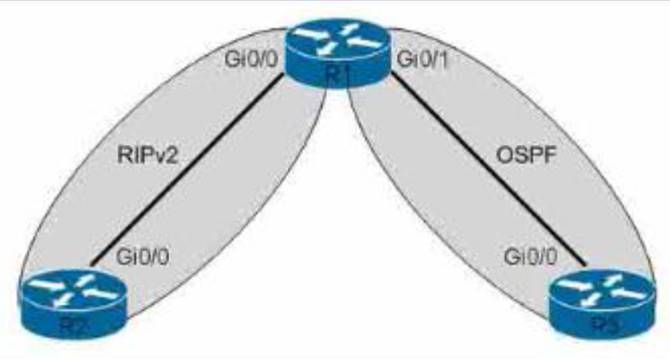- All Exams Instant Download
Which three options are possible reasons for this behavior?
R1 is performing mutual redistribution, but OSPF routes from R3 are unable to reach R2.

Which three options are possible reasons for this behavior? (Choose three.)
A . R1 requires a seed metric to redistribute RI
C . The RIP version supports only classful subnet masks.
D . R1 is filtering OSPF routes when redistributing into RI
F . R3 and R1 have the same router I
H . R1 and R3 have an MTU mismatch.
. R2 is configured to offset OSPF routes with a metric of 16.
Answer: A, C, F
Latest 400-101 Dumps Valid Version with 150 Q&As
Latest And Valid Q&A | Instant Download | Once Fail, Full Refund


you are missing question B which offset all answers:
A. R1 requires a seed metric to redistribute RIP.
B. The RIP version supports only classful subnet masks.
C. R1 is filtering OSPF routes when redistributing into RIP.
D. R3 and R1 have the same router ID. E. R1 and R3 have an MTU mismatch.
F. R2 is configured to offset OSPF routes with a metric of 16.
Correct Answer: ACF
Explanation:
A. RIP requires a seed metric to be specified when redistributing routes into that protocol. A seed metric is a “starter metric” that gives the RIP process a metric it can work with. The OSPF metric of cost is incomprehensible to RIP, since RIP’s sole metric is hop count. We’ve got to give RIP a metric it understands when redistributing routes into that protocol, so let’s go back to R1 and do so.
C. Filtering routes is another explanation, if the routes to R2 are boing filtered from being advertised to R1.
F. If the metric is offset to 16, then the routes will have reached the maximum hop count when redistributed to RIP. The max hop count for RIP is 16.